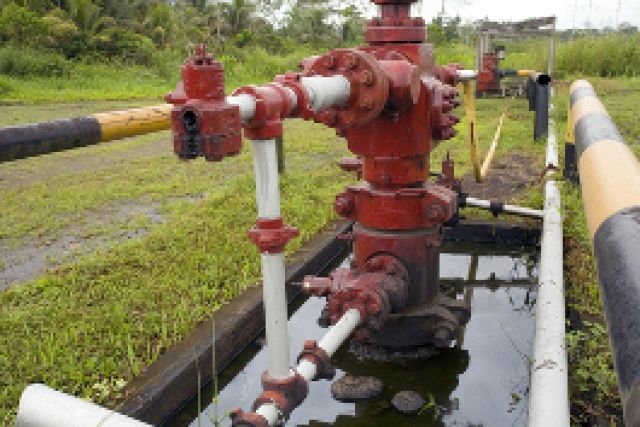
The world awaits U.S. unconventional gas producers’ expertise in unlocking reserves across the world—with Europe possibly the most anxious, according to panelists in the webinar Translating The Profit Overseas: International Unconventional Gas Opportunities, And The Macro Global Gas-Price Forecast now available on demand.
“There are excellent opportunities for savvy U.S. independents who have the technologies and management experience, and the opportunities are best in those countries where there are established unconventional resources and high-priority energy needs,” says Dr. Pete Stark, vice president, industry relations, for IHS Inc.
Stark describes coalbed-methane, tight-gas and shale-gas reservoirs across the globe. In a spotlight on European unconventional resources, he says, “The shale gas area is the hot new area of interest. I was intrigued to learn only recently the distribution of the recent shale licenses in southern France, also just west of Switzerland and farther to the north in easternmost France. Those projects are of great interest but there is not a lot of detail on them yet.”
More shale-gas exploration is under way in Germany (by ExxonMobil Corp.) and in Poland. OMV has identified shale gas in Austria. Producers exploring the continent’s shale, besides ExxonMobil and OMV, include ConocoPhillips, Toreador Resources Corp., BNK Petroleum Inc., Composite Energy Ltd., EUR Energy, Layne Energy, San Leon Energy Plc, Schuepbach Energy LLC and Total SA.
“Europe is a target because it has unconventional resources; it has low entry costs, very attractive fiscal regimes, and a stable regulatory environment; and it already has pipeline infrastructure. Also, there is strong demand and gas prices, and there is an energy security need as well.”
Charles De Jager, partner with law firm Mayer Brown and based in Brussels, advising foreign interests on gaining access to European Union markets, says gas supply is a top issue again since the European gas crisis of January 2009—not the first time Russia has cut off gas supply to many European countries as a result of a dispute with Ukraine.
“This really served to refocus people’s attention on the issue of security of gas supply,” De Jager says. “As a result, the EU has embarked on a fairly rapid process, by EU standards, for the review of the legislation that governs security of gas supply.”
A growing amount of European gas is from sources other than Russia. “Gazprom, in recent years, has lost approximately one third of its European market, primarily to Norway, Trinidad and Qatar. So, Gazprom’s shenanigans up to now have certainly cost it a certain part of its European market.”
Except for two net gas producers among the EU’s 27 member countries, all are net importers. Among these, nearly all import 80% or more of their gas supply, at times 100%. “Four of the big five European economies are almost entirely reliant on gas imports,” De Jager says. EU dependence on imported gas is some 60% overall.
U.S. producers’ domestic efforts are going without market-price recognition, notes Laurent Key, associate in the U.S. commodities research group for Societe Generale’s corporate and investment-banking unit. “We should experience more recovery of industrial demand, even in the bearish scenario, but we will remain below the 2008 level and well below 2007 levels,” he says. “Many people in the market talk about the peak U.S. industrial gas demand in the U.S. as being long ago, in 2004 and 2005.”
How U.S. prices fare going forward depends on many variables. “When we talk to producers…just a small survey told us that more than 80% of U.S. production is hedged for 2010, 2011 and 2012, so this is why we have such an increasing trend in U.S. production.”
When will unconventional-gas exploitation find full speed in Europe? “We’re not going to see a four- to five-year ramp-up period in European shales,” Stark says. Unless an exploration company hits a quick home-run find, “we’re going to see a four- to five-year demonstration period (and if promising, then) some M&A activity and partnering to bring more capital and know-how to speed the process.”
The presenters’ full remarks, and their slides, including maps, tables and graphics, are available for viewing and download on demand at Translating The Profit Overseas: International Unconventional Gas Opportunities, And The Macro Global Gas-Price Forecast.
Recommended Reading
Chord Drills First 4-Mile Bakken Well, Eyes Non-Op Marcellus Sale
2025-02-28 - Chord Energy drilled and completed its first 4-mile Bakken well and plans to drill more this year. Chord is also considering a sale of non-op Marcellus interests in northeast Pennsylvania.
How Elk Range Took the Leap to Buy Oxy’s $905MM D-J Heirloom
2025-04-07 - Elk Range Royalties closed on a $905 million purchase of Occidental’s assets in the Denver-Julesburg Basin in March— a once-in-a-lifetime purchase, CEO Charlie Shufeldt told Hart Energy.
Occidental to Up Drilling in Permian Secondary Benches in ‘25
2025-02-20 - Occidental Petroleum is exploring upside in the Permian’s secondary benches, including deeper Delaware Wolfcamp zones and the Barnett Shale in the Midland Basin.
Improving Gas Macro Heightens M&A Interest in Haynesville, Midcon
2025-03-24 - Buyer interest for Haynesville gas inventory is strong, according to Jefferies and Stephens M&A experts. But with little running room left in the Haynesville, buyers are searching other gassy basins.
Oklahoma E&P Canvas Energy Explores Midcon Sale, Sources Say
2025-04-04 - Canvas Energy, formerly Chaparral Energy, holds 223,000 net acres in the Anadarko Basin, where M&A has been gathering momentum.
Comments
Add new comment
This conversation is moderated according to Hart Energy community rules. Please read the rules before joining the discussion. If you’re experiencing any technical problems, please contact our customer care team.





